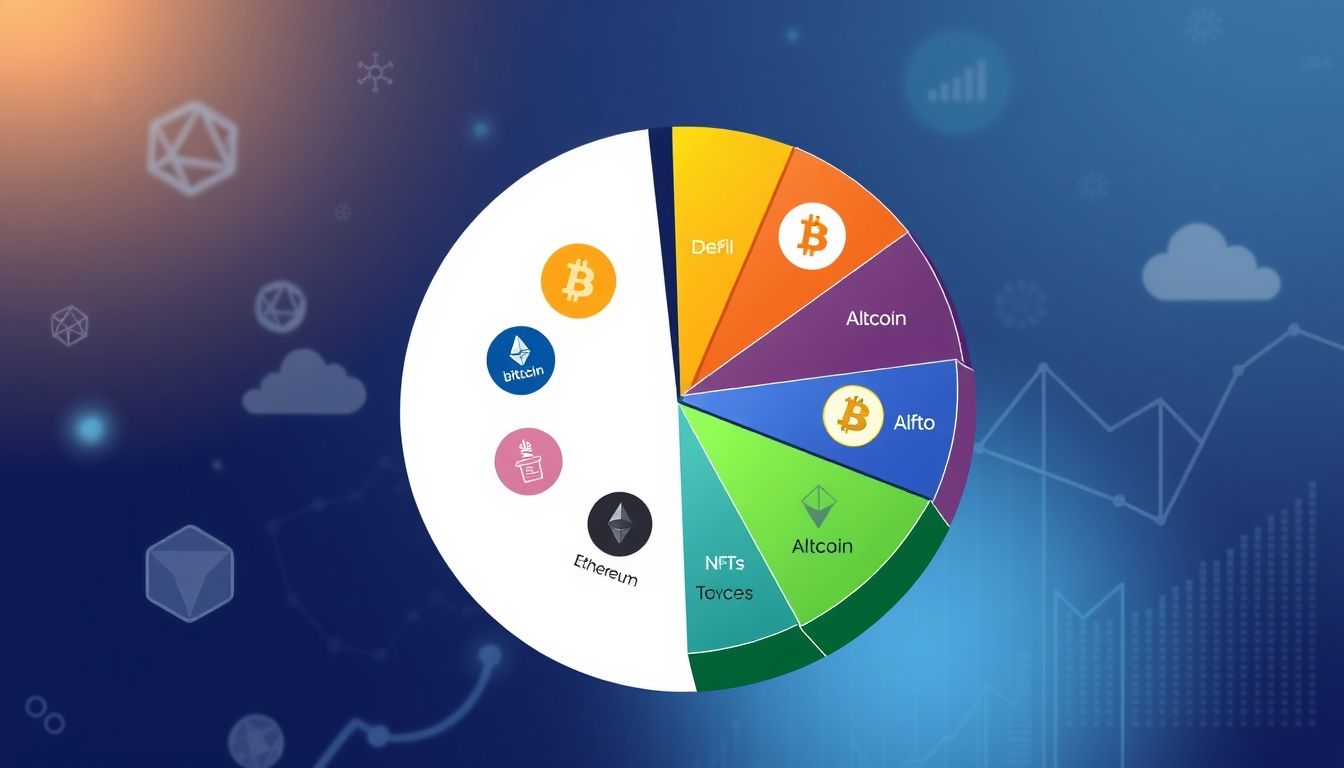Introduction to the World of Cryptocurrency Earning
The world of cryptocurrencies is experiencing rapid growth, opening doors to diverse investment opportunities. It's no longer just about buying and holding coins; innovative methods have emerged for earning cryptocurrencies, such as staking and mining. This article aims to provide a comprehensive guide on how to leverage these methods, focusing on practical aspects and smart strategies.
Chapter 1: Understanding the Basics of Cryptocurrencies
Before delving into the details of staking and mining, it's essential to understand the basics of cryptocurrencies. Cryptocurrencies are digital assets that rely on blockchain technology to secure and verify transactions. Popular cryptocurrencies include Bitcoin, Ethereum, and Ripple.
What is Blockchain Technology?
Blockchain is a distributed digital ledger comprising a chain of blocks, each containing a set of transactions. Blockchain is characterized by transparency and security, as each transaction is verified by a wide network of users.
Types of Cryptocurrencies
- Cryptocurrencies: Such as Bitcoin and Ethereum, used to facilitate digital transactions.
- Tokens: Represent assets or rights within a specific ecosystem, such as governance tokens or tokens for accessing services.
- Stablecoins: Designed to maintain a stable value, often pegged to a fiat currency like the US dollar.
Chapter 2: Staking: Earning Cryptocurrency Simply
Staking is the process of holding cryptocurrencies in a digital wallet to support the blockchain network, in exchange for rewards. Staking is considered a more energy-efficient alternative to mining, especially in currencies that rely on the Proof of Stake mechanism.
How Does Staking Work?
- Choose a cryptocurrency that supports staking: Such as Ethereum 2.0, Cardano, and Solana.
- Purchase the cryptocurrency: Through cryptocurrency trading platforms.
- Store the currency in a wallet that supports staking: Such as Ledger or Trust Wallet.
- Stake the currency: By linking the wallet to a staking platform or running your own node.
- Receive rewards: Rewards are proportional to the amount of currency staked and the duration of the staking.
Advantages and Disadvantages of Staking
| Advantages | Disadvantages |
|---|---|
| Continuous passive income | Cryptocurrency price volatility |
| Easy to get started | Lock-up period may prevent access to funds |
| Contribution to network security | Security risks related to the wallet or staking platform |
Practical Examples of Staking
Ethereum 2.0: Staking on the Ethereum 2.0 network allows users to earn rewards for contributing to network security. Users can stake 32 ETH or join staking pools.
Cardano: ADA can be staked in Daedalus or Yoroi wallets and earn periodic rewards.
Chapter 3: Mining: Investing in Infrastructure
Mining is the process of verifying transactions and adding them to the blockchain, in exchange for cryptocurrency rewards. Mining requires a significant investment in hardware and electricity and is considered more complex than staking.
How Does Mining Work?
- Purchase mining hardware: Such as ASIC (Application-Specific Integrated Circuit) devices specialized in Bitcoin mining.
- Connect the devices to electricity and the internet: Mining requires significant electricity consumption.
- Install mining software: And connect it to the blockchain network.
- Compete to solve complex mathematical equations: The winner receives a cryptocurrency reward.
- Receive rewards: Rewards are distributed to miners who contributed to transaction verification.
Advantages and Disadvantages of Mining
| Advantages | Disadvantages |
|---|---|
| Potential for large rewards | High cost of hardware and electricity |
| Contribution to network security | Difficulty competing with large companies |
| Possibility of mining in mining pools to increase profit opportunities | Cryptocurrency price volatility |
Practical Examples of Mining
Bitcoin: Bitcoin mining requires specialized ASIC devices and significant electricity consumption. Mining is often done in pools to increase profit opportunities.
Ethereum (before transitioning to Proof of Stake): Ethereum used to be mined using GPUs (Graphics Processing Units), but after transitioning to Proof of Stake, staking became the primary method of earning Ethereum.
Chapter 4: Comparing Staking and Mining
Staking and mining differ in several aspects, including cost, difficulty, and environmental impact. Here's a comprehensive comparison between them:
| Feature | Staking | Mining |
|---|---|---|
| Cost | Relatively low | High (hardware, electricity) |
| Difficulty | Easy | Complex |
| Environmental Impact | Low | High |
| Rewards | Lower | Higher (but less likely) |
| Requirements | Cryptocurrencies | Specialized hardware |
Chapter 5: Smart Investment Strategies in Cryptocurrencies
Investing in cryptocurrencies requires following smart strategies to reduce risks and increase profits. Here are some important tips:
- Diversification: Don't put all your money into one cryptocurrency. Distribute your investments across several different currencies.
- Research and Analysis: Before investing in any cryptocurrency, conduct thorough research and analysis to understand the technology and the project the currency supports.
- Risk Management: Determine the amount of risk you can tolerate and don't invest more than you can afford to lose.
- Long-Term Holding (HODLing): Buying cryptocurrencies and holding them for a long period may be a profitable strategy in the long run.
- Leveraging Market Volatility: Cryptocurrencies can be bought at low prices and sold at high prices to generate quick profits.
Chapter 6: Risks and Challenges in the Cryptocurrency World
Investing in cryptocurrencies involves risks and challenges that must be taken into account:
- Price Volatility: Cryptocurrency prices can experience sharp fluctuations in a short period.
- Security Risks: Digital wallets and trading platforms can be subject to hacking and theft.
- Government Regulations: Government regulations may affect the future of cryptocurrencies.
- Scams: Be wary of scams and fraud targeting cryptocurrency investors.
Chapter 7: Useful Tools and Resources for Cryptocurrency Investors
Many tools and resources are available that can help investors make informed decisions:
- Cryptocurrency Trading Platforms: Such as Binance, Coinbase, and Kraken.
- Data Analysis Websites: Such as CoinMarketCap and CoinGecko.
- Digital Wallets: Such as Ledger, Trezor, and Trust Wallet.
- News and Articles: Follow news and articles related to cryptocurrencies from reliable sources.
Chapter 8: The Future of Staking and Mining
Staking and mining are expected to undergo significant developments in the future, with the emergence of new technologies and improvements in efficiency and security.
- Liquid Staking: Allows users to stake their cryptocurrencies while retaining the ability to trade them.
- Green Mining: Using renewable energy sources to mine cryptocurrencies.
- Cloud Mining: Renting mining power from specialized companies instead of buying hardware.
Chapter 9: Successful Examples of Cryptocurrency Projects
Many cryptocurrency projects have achieved great success thanks to innovative technology and a distinguished team. Among these projects are:
- Ethereum: A decentralized platform for blockchain applications.
- Cardano: A third-generation blockchain focusing on sustainability and security.
- Solana: A high-performance blockchain characterized by fast transactions and low fees.
Chapter 10: Tips for Beginners in the Cryptocurrency World
If you're a beginner in the cryptocurrency world, here are some tips that can help you get started:
- Start with small amounts: Don't invest large amounts at first until you gain enough experience.
- Learn the basic terms: Understand the terminology used in the cryptocurrency world.
- Be wary of false promises: Avoid projects that promise quick and easy profits.
- Consult experts: Seek advice from experts before making any investment decisions.
Disclaimer: This article is for informational purposes only and does not constitute financial advice. You should consult a qualified financial advisor before making any investment decisions.




